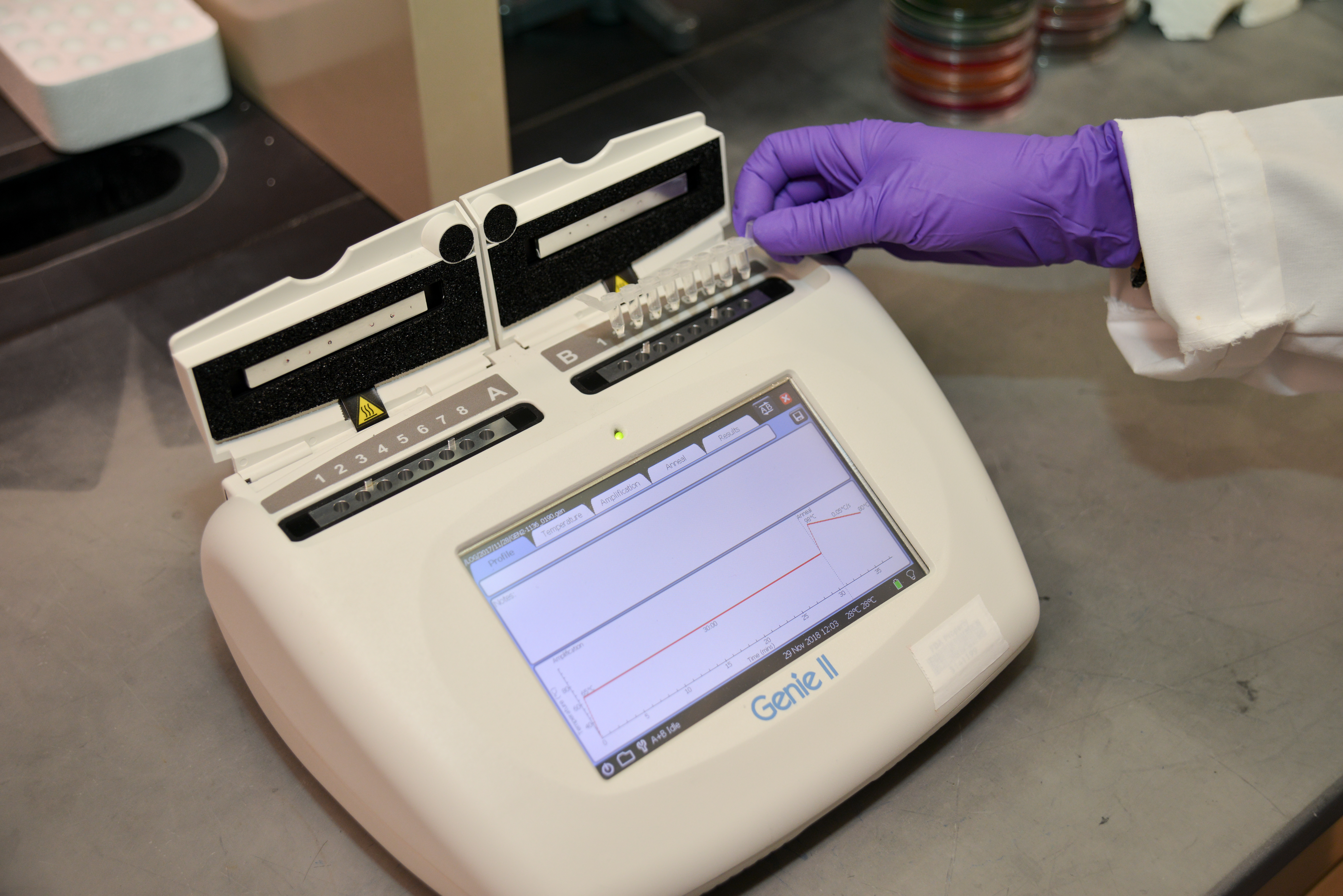FDA’s Center for Veterinary Medicine Develops an Innovative Method to Test for Salmonella in Animal Food
A CVM scientist loads samples into an instrument to begin a loop-mediated isothermal amplification (LAMP) analysis.
Scientists at the U.S. Food and Drug Administration’s (FDA) Center for Veterinary Medicine (CVM) have developed a new method to test for Salmonella in animal food. Product testing for bacteria is critical to keeping you, your pets, and other animals safe from infections linked to food.
The traditional method of testing takes days to detect Salmonella, while the new method can detect Salmonella within minutes. The traditional method requires labor-intensive and time-consuming work to monitor for the growth of bacteria in samples taken from food. In contrast, the new method tests food samples for a DNA sequence that is unique to Salmonella, called Salmonella invasion gene invA. At the heart of the new method is a technique known as loop-mediated isothermal amplification (LAMP), which is a quick and reliable way to make copies of the invA gene or other DNA targets that indicate the presence of Salmonella in food.
The LAMP method can be conducted using a lightweight tool that runs on battery power. In fact, you can hold the instrument needed to perform the testing in your hands. The smaller equipment does not sacrifice method performance and user experience.
After developing the LAMP method to detect Salmonella in animal food, the team conducted extensive testing and validation exercises with 14 analysts from seven FDA, state, and academic laboratories to show that different people in different laboratories across the U.S. (and one in Canada) could use the LAMP method to detect Salmonella and get the same, accurate results. They demonstrated that the LAMP method is a valid way to detect Salmonella in dry cat food, dry dog food, cattle feed, horse feed, poultry feed, and swine feed. The method has been accepted into the FDA’s Bacteriological Analytical Manual (i.e., Chapter 5 Salmonella), indicating that it is recognized as a validated laboratory procedure for the microbiological analysis of foods. This is a tremendous achievement, reflecting years of dedicated research and collaboration with partner laboratories.
This method is making its way to routine, regulatory use. Several FDA and state laboratories that have adopted the LAMP method to test field samples have reported that it is a simple, rapid, and robust assay that saves time and can be performed with minimal laboratory resources and space, compared to traditional methods. When the LAMP and traditional methods were used in a side-by-side comparison, both methods delivered the same result.
The development of an additional, efficient way to monitor animal food for Salmonella illustrates the FDA’s commitment to animal food safety and underscores the value returned to U.S. consumers and the animal food industry by FDA’s investment in research. FDA is innovative in its approach to protecting people and animals from food-borne illnesses. This new approach offers an additional option for folks who test for Salmonella to conduct such testing.
For more information:
- Get the facts about Salmonella
- Loop-Mediated Isothermal Amplification for Salmonella Detection in Food and Feed: Current Applications and Future Directions
- Validation of a Salmonella Loop-Mediated Isothermal Amplification Assay in Animal Food
- Multi-Laboratory Validation of a Loop-Mediated Isothermal Amplification Method for Screening Salmonella in Animal Food
- FDA’s Bacteriological Analytical Manual
- Screening of Salmonella in animal food by LAMP
- Confirmation of Salmonella isolates by LAMP

